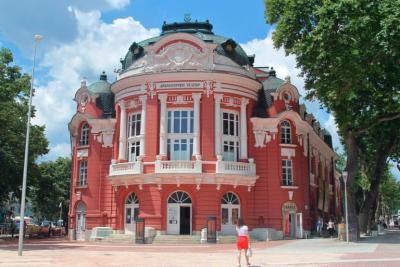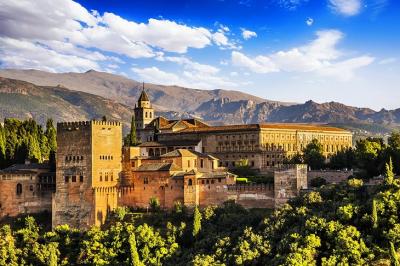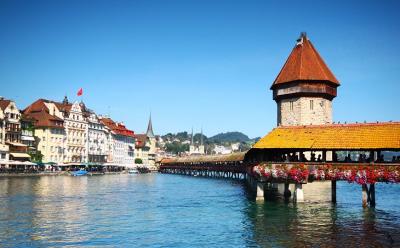Welcome to Ecuador
Another fantastic place for tourists seeking outdoor adventures is Ecuador. The major and highly populated districts are a mere stone’s throw from untouched forests and nature that typically attract climbers.
Not to be outdone by other South American countries, Ecuador has developed a solid reputation for its kayaking and rafting opportunities. Other activities to entice outdoor enthusiastcs include diving, fishing, hiking, horseriding, mountain biking and surfing. A great amount of exotic birds frequently draw birdwatchers from around the world.
Climbing
The twin range of the Andes that runs the length of Ecuador is known as the “avenue of volcanoes.” There are a range climbs available here for every level of climber from easy walks to hill-treks and mountain excursions for climbers who have experience. At 5,897m, Cotopaxi is one of the countries snow peaks that attracts a number of tourists and you need full equipment for mountaineering. Other peaks are Chimborazo (6,268m), Cayambe (5,790m) and Iliniza Sur (5,263m).
There are also a variety of climbs available that do not require any particular equipment and are less demanding. Among these are Corazón (4,788m), Guagua Pichincha (4,794m), Imbabura (4,609m), Pasochoa (4,200m), Rumiñahui (4,712m), and Sincholagua (4,893m). Many of the higher peaks in Ecuador require climbers to be physically fit and determined as well as good experienced in mountaineering. However, there are other mountains, for example the 5,319m El Altar, that are very arduous technically and require experience of a climber as well as the services of an experienced guide if you doubt about your own experience.
When choosing an ASEGUIM-certified guide you have to pay $120-$250 per person per climb as these guides are required to complete a three-year course and an exam in order to get the Diploma de Guía. Considering the potential risks associated with even the seemingly easiest of climbs, an experienced guide is essential regardless of how experienced you are as a climber yourself. Guides have extensive knowledge of the local weather, the best routes, how to avoid avalanches, and the nearby glaciers and crevasses, that can all turn an easy climb into a dangerous expedition.
The best months for climbing are usually December, January, June, July and August. March to May are the worst months to do a climb due to both the climate and the landscape of the mountains. As a result, many mountains cannot be climbed during these three months, but some mountains (like Cotopaxi) are doable year-round. Be aware of the glaciers in Ecuador as they’re not as predictable as their European counterparts. Conditions of the glaciers change daily, which means that the technical difficulty of the climbs also changes daily.
When accompanied by a guide, all of the equipment you need for the climb is provided by the company through which the guide is booked. Alternatively, it’s possible to rent gear from specialist outlets and companies in Quito, but bring your own boots if possible because they’re guaranteed to be better than the options for rent. You’ll also need to take your own water and snacks for the climb, while meals are provided by the guide. Mountain refuges are the typical accommodation options and it’s common to get only four hours’ sleep at most before setting out for a major climb – most of which begin at midnight or 1am in order to reach the summit by sunrise.
The significance of acclimatizing yourself before summiting high peaks is essential and a point that cannot be emphasized enough. To do this, spend a couple of days at Quito, which has an altitude of 2,800m. All you need to do here is to rest with short day-trips on lower peaks of 3,500 – 3,800m. You can also acclimatize yourself at any of the hotels around Cotopaxi National Park, in Salinas village and at the refuge at La Urbina near Riobamba.
Climbing active volcanoes is also increasingly popular, but be thoroughly informed about the conditions before attempting an ascent. Cotopaxi, Guagua Pichincha, Reventador, Sangay and Tungurahua are the popular volcanoes to ascend.
Hiking
The only downside to Ecuador’s magnificent wilderness and hiking options is that trails are seldom clearly marked and maps are hard to come by. For the greatest hike choices, head to the sierra, which has expansive open areas and breathtaking views in the mountains. Many trails also go up to the páramo. The southern sierra is home to Ecuador’s most famous long-distance hike: The Inca Trail to Ingapirca. This hike takes three days and ends at the most significant Incan ruins in Ecuador. Parque Nacional Cajas, also in the southern regions, is another excellent choice for hiking and bears a strong resemblance to the Scottish highlands. Another option is the fantastic two-hike in the Parque Nacional Podocarpus that crosses the páramo to the Lagunas del Compadre.
Other good choices for day-trips include the region that surrounds Laguna Quilotoa and Parque Nacional Sangay’s El Placer hot springs. In comparison, the Oriente offers fewer choices since it is dominated by dense forests; however, the Reventador trail – which can be a two- to four-day hike – is a descent to the lowlands where the country’s landscapes and diverse habitats can be viewed. It is comparable to the trek from Oyacachi to El Chaco. The highlands are generally a good choice for hikes as are Cotopaxi and Machalilla National Parks. Of course, there are many other options to be explored, but this list is a good start to place.
Hiking Equipment
If you want to complete an unguided long-distance hike, make sure to have the relevant IGM topographical maps before departing from Quito. A compass (especially with GPS) is also necessary as well as a waterproof tent, a sleeping bag that is suitable for –5°C temperature (in the sierra), a stove, candles, and waterproof matches. If you’re hiking in the sierra you must pack the following items: sturdy hiking boots (with spare laces) that are also water-resistant; thermal underwear; warm, layered clothing; a jacket, trousers and gaiters that are all waterproof; hat and gloves; sunglasses; sunscreen; water purification tablets and a first-aid kit. Wellington boots are also useful for the deep mud that is often on the mountain paths after the rain. In general, the sierra is the driest place from June to September while February to April is the wet season.
Guided Hikes
It’s always a good idea to hire a local guide – preferable through one of the tour operators in-country – as guides take care for all transport. Your trip can be enhanced by the guide’s knowledge of the area that you’re hiking through as well local customs. Of course, a guide can also sour your trip if he hikes at a different speed to you or you simply clash in other ways.
Most guides charge around $20–40 per person per day and you may need to have a minimum of three or four people in your group. Many companies in Quito provide this service, but provincial operators and guides are more difficult to find.
Rafting and Kayaking
Most of the operators for rafting and kayaking are situated in Quito, Tena and Baños, but there are numerous rivers on which these sports can be done. In particular, the ríos Blanco and Toachi, between Quito and Santo Domingo, provide a variety of sought-after runs that are appropriate for novices and experienced participants. Due to the quantity of rivers around Tena, rafting and kayaking are most popular in this area. Beginners favour the Upper Napo (Jatunyacu) while experienced paddlers tend to travel to the Río Misahuallí nearby where trips are taken through quiet rainforests and magnificent canyons. From Tena, you can also go to the Río Hollín, Río Anzu, and the Río Quijos and tributaries while the Río Upano, in the southern Oriente, is great for multi-day trips that include the mesmerizing Namangosa Gorge.
The rafts are designed for up to nine people including the guide and are represented as inflatable dighy-type boats. The general grading system is used for the categorization of the rapids with Class II and III rapids suitable for amateurs while still providing exciting rapids combined with calmer passages. In contrast, only advanced paddlers should attempt Class V runs.
As always, make sure you are well-informed about the conditions of the river as Class II. Rivers become significantly more dangerous during the wet season. You must always be ensured that your guides are trained, experienced in first aid, provide quality equipment and make use of a safety kayak beside the raft. The best company through which to do a trip is Yacu Amu Rafting, which runs from Quito.
Birdwatching
Ecuador is perhaps the world’s best location for birdwatching due to its diverse range of species that is equal to the variety found in North America and Europe together. With hundreds of endemic species, there have also been some newer discoveries like the 1997 discovery of the Jocotoco Antpitta near Vilcabamba. The western side of the Andes in the Chocó bioregion, which forms part of the montane forests and transition zone habitats, is particularly good for a wide range of species. Mindo, in the west of Quito, is famous around the world for being a significant bird region with numerous private reserves in the northwest.
On the Andes’ eastern slopes, head to Cosanga and Baeza for spectacular birdwatching opportunities while the Podocarpus National Park and regions around Loja, Zamora and Vilcabamba in the south are also recommended. True enthusiasts should head to one of the lodges in the Oriente that provides bird lists and ornithologist guides. The jungle lodges are grouped into four categories and each has slightly different lists of bird species: the Cuyabeno area; around Misahuallí and Tena on the upper Río Napo or in Sumaco-Galeras reserve; on the lower Río Napo; and in Pastaza and the Southern Oriente. The national parks, such as El Ángel and Cajas, are usually the best highland and páramo habitats. The Cayambe-Coca reserves and highland sections of Cotacachi-Cayapas are also excellent while the coastal Parque Nacional Machalilla and Cerro Blanco have numerous sections of dry forest that are interesting to explore. Hundreds of shore and sea birds visit the saltpans on the Santa Elena peninsula.
It’s worth hiring a guide from the area when planning a birdwatching excursion. They are experienced at finding birds in the local greenery and know the best locations for this activity. Upper-end lodges and private reserves usually have their own guides, many of whom are qualified ornithologists, or will be able to locate such a guide for you.
Mountain Biking
You’ll find more opportunities for mountain biking in the sierra rather than the lowlands. It’s quite cheap to rent bikes for a day or even half a day, but always examine the condition of the bike before you leave the rental shop. Most tourist centres offer rental facilities, but Quito in particular has a number of specialist companies that organize day- and multi-day trips to various parts of the sierra including Cotopaxi National Park, the Papallacta area and the Otavalo region. There are both downhill and cross-country options available for such trips.
Horseriding
The sierra region, especially the numerous haciendas that have been changed into country inns, provide a number of opportunities for horseriding since it has been a part of the daily life. Start early in the morning to make the most of the crisp morning light, while avoiding the regular rain of the afternoon, and create a memorable experience as you ride up the outstretched páramos with snow-kissed volcanoes in the distance.
The horses are usually well-cared for at most of the trustworthy companies and haciendas. However, as always, there are many operations (usually the cheaper ones) that do not care for their animals. Therefore, it’s important to refuse a horse that does not look well when signing up for a trip. Take time to check the fit of the saddle, the tightness of the girth and the length of the stirrups before setting off on a trip. It’s rare to be provided with a riding hat.
Diving and Snorkelling
Without a doubt, the Galápagos is the top location for scuba-diving in Ecuador. Tours are usually pre-arranged, but it’s possible to make these arrangements on the islands, too. Due to its cooler waters and strong currents, the Galápagos is better suited to experienced divers, but beginners should not be discouraged from learning to dive here as the variety of reef fish is worth the trip. If you take a cruise in the Galápagos, you’re likely to have an opportunity to go snorkelling, but bring your own equipment if possible as boats seldom have enough for everyone onboard. From July to December, you will definitely need to use a wetsuit. Apart from dives around the Isla de la Plata, which are organized in Puerto López, the mainland does not offer many opportunities for either scuba-diving or snorkelling.
Surfing
You can find the greatest opportunities for surfing in Manabí and Guayas provinces between Playas and Manta. Casual Montañita in Guayas province is widely considered to be the centre of surfing, but Canoa, which is quieter, and Mompiche in the north are also favourites for the sport. In the Galápagos, San Cristóbal island’s Puerto Baquerizo Moreno is a local hotspot. It’s possible to rent surfboards and take lessons in all of these locations, but the main season is from December to March.
Paragliding
Paragliding is particularly popular in Quito and Crucita, but has gained popularity in other parts of the highlands – especially Ibarra (FlyEcuador), which has several cliffs and ledges that are ideal for the support. Some operators provide tandem flights for novices as well as more advanced courses.
Fishing
Like in other parts of South America, fishing in the sierra’s lakes is popular. There are also a number of renowned locations for fishing in national reserves such as Cajas in the south and El Ángel in the north although some places do require permits for fishing. It’s rare for people to visit the Oriente without participating in a fishing excursion to catch the famous piranha with a simple line, hook and bait. Be careful when removing your catch of Oriente fish from the hook, however, as some species of this fish have deceptively poisonous spines. Deep-sea fishing is far less popular as it is commonly associated with the wealthy people on the coast. Marlin, tuna and dorado are mostly fished from Salinas or Manta.


.jpg)




